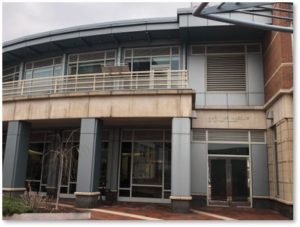 In last week’s post on Boston’s Privately Owned Public Spaces (POPS), I mentioned that I had just visited one. I went there because I was planning to write about some of the pocket museums that dot the city. One of them is located in a POPS on Battery Wharf, so this post is a twofer.
In last week’s post on Boston’s Privately Owned Public Spaces (POPS), I mentioned that I had just visited one. I went there because I was planning to write about some of the pocket museums that dot the city. One of them is located in a POPS on Battery Wharf, so this post is a twofer.
I had heard of Battery Wharf’s maritime museum and a friend who recently moved in there confirmed it for me. How could I resist?
A POPS with Advantages
When it comes to Privately Owned Public Spaces, one often has to look hard, persist, and sometimes be downright cagey to get into them. You rarely see them listed on a website. Not so at this POPS, a pocket museum on the history of Battery Wharf that has several things going for it:
- It is located on the ground floor with an entrance directly from the plaza.
- A sign makes the entrance obvious.
- You can walk right in without a receptionist activating the elevator, being escorted by a security guard, or waiting for a narrow time window.
- The space is pleasant and open and you can even take the elevator to an “observation deck” on the second floor.
- The historical exhibits have been done well, with attention to accuracy and detail.
Having said that, I must add that finding the entrance from Commercial Street can be a challenge. Despite checking the location on a kiosk map, I got confused and wandered around the complex for a while without finding it. Having limited time for my research, I popped in to Residence #2 and asked the receptionist, who directed me to the right location with a smile.
The Live Oak Connection
And there it was, with “Maritime Museum at Battery Wharf” right above the door.
 Inside, I was struck first by an enormous wooden bench that came from Charlestown, provided by Longleaf Lumber from an excavation. A plaque on the wall above the bench talks about the “live-oak connection” between shipbuilding in the U.S. and the swamps of the south, The USS Constitution, docked across the harbor, was built partly from live oak harvested from Georgia’s coastal swamp forests.
Inside, I was struck first by an enormous wooden bench that came from Charlestown, provided by Longleaf Lumber from an excavation. A plaque on the wall above the bench talks about the “live-oak connection” between shipbuilding in the U.S. and the swamps of the south, The USS Constitution, docked across the harbor, was built partly from live oak harvested from Georgia’s coastal swamp forests.
The live oak used for shipbuilding was stored in holding ponds to prevent warping and degradation. When wooden ships gave way to steel, these ponds were simply filled in with the timber still in place. (One wonders where these ponds were and what shape these timbers are in now.)
The museum’s wooden floor was milled from the live-oak pilings that once held up the original Battery Wharf. Contractors removed the wood and replaced them with concrete pilings when the new development went up. They harvested wood for the floor before the renovation. Now, that’s thinking ahead.
The Maritime Museum Exhibits
 The museum’s exhibits include archival photos and information on:
The museum’s exhibits include archival photos and information on:
- The Battery Wharf Story
- The Shipbuilding and Live Oak Connection
- Industry on the Waterfront
- Birthplace of the Coast Guard
- Trains and Ferries
- Off to War
A screen displays a loop of color presentations about different aspects of Battery Wharf’s history and that of the harbor but I didn’t have time to watch the whole thing. A large model of the Battery Wharf complex helps to orient where you are in relation to Commercial Street and Boston Harbor.
Any Boston By Foot docent planning a tour of the Harborwalk could do some research from these exhibits.
The Observation Deck
The observation deck is one floor up, which doesn’t make for a very panoramic view. But that’s just nitpicking. It does curve around the building, so you can see other parts of the Battery Wharf complex and look south on Commercial Street.
Outside the museum door you find a small, leaf-shaped pergola where you can sit and watch the water while protected from the sun and the rain.
All in all, the Maritime Museum at Battery Wharf is a pleasant place, informative and relaxing. As a Privately Owned Public Space, it offers a great deal to the visitor. Unlike secretive Independence Wharf and the churlish Boston Harbor Hotel, it informs you about the wharf, the harbor and the history. I wish more of Boston’s POPS took this welcoming approach.
The Maritime Museum at Battery Wharf
The Maritime Museum
3 Battery Wharf
Boston, MA 02109
(617) 994-9000
Start at the end of Battery Street and take a slight left to walk through the Battery Wharf complex toward the harbor. Keeping the Café Amalfi on the right and Exhale Boston on the left. When you get past the Number 2 residence building, turn left. The museum is right there. If you reach the water, you have gone too far.
Admission is free and the Maritime Museum is open until 9:00 pm.


